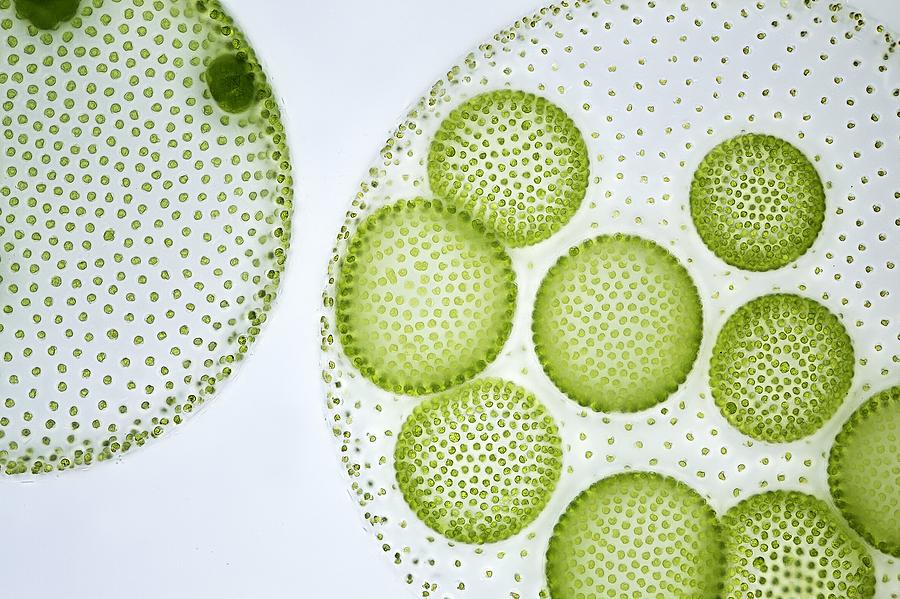It forms spherical or oval colonies, as small as the size of a pinhead with a hollow mucilaginous mass, with each colony containing almost 50,000 cells. Dutch microscopist Antonie van Leeuwenhoek first observed Volvox in 1700. Where do they Live Volvox are found throughout the world, inhabiting various temporary and permanent freshwater-bodies such as tanks, ponds, lakes, ditches, and puddles. They exist by forming colonies known as coenobium. They multiply fast in nutrient-rich environments, especially during the rainy season, often causing their habitat water-bodies to turn green.
Vegetative Body
The colony of Volvox forms a hollow ball-like structure in which the cells appear green. Every motile colony can swim freely in their environment. The individual pear-shaped cells are arranged in a single layer joined by delicate strands of cytoplasm. Each colony develops three types of cells: Vegetative Cells: These contain flagella, and are capable of locomotion, and are capable of food production. But they are unable to form new colonies. Asexual Reproductive Cells: These are larger compared to the vegetative cells. They produce a motile asexual spore called zoospore. Sexual Reproductive Cells: These cells produce sex cells, namely sperms and eggs.
Parts
What do Volvox Eat
Each species of Volvox obtains their food through photosynthesis due to the presence of the pigment chlorophyll inside their chloroplast, and thus are autotrophic in nature. Their food is stored in the form of carbohydrate, which provides them the energy required for their growth and reproduction.
How do they Move
Movement in Volvox is achieved by the coordinated action of the flagella present in all cells of the colony. The entire colony rolls over the water surface, and hence Volvox is also called the rolling algae. The eyespot also controls the movement of the flagella by sensing light with the help of their photoreceptive organs.
How do they Reproduce
Reproduction in Volvox can be both sexual and asexual. Under favorable growth conditions, during the summer season, they perform asexual reproduction, whereas sexual reproduction occurs at the end of the season. The presence of sex-inducing chemicals called pheromones also determines the type of reproduction they perform. Asexual Reproduction Sexual Reproduction It involves a male sex cell called antheridia and a female sex cell known as oogonia, together called gametangia. Thus, the lifecycle in Volvox mainly consists of the dominant free-living haploid (n) gametophyte stage and a less dominant sporophyte stage, represented by the diploid (2n) zygote.
